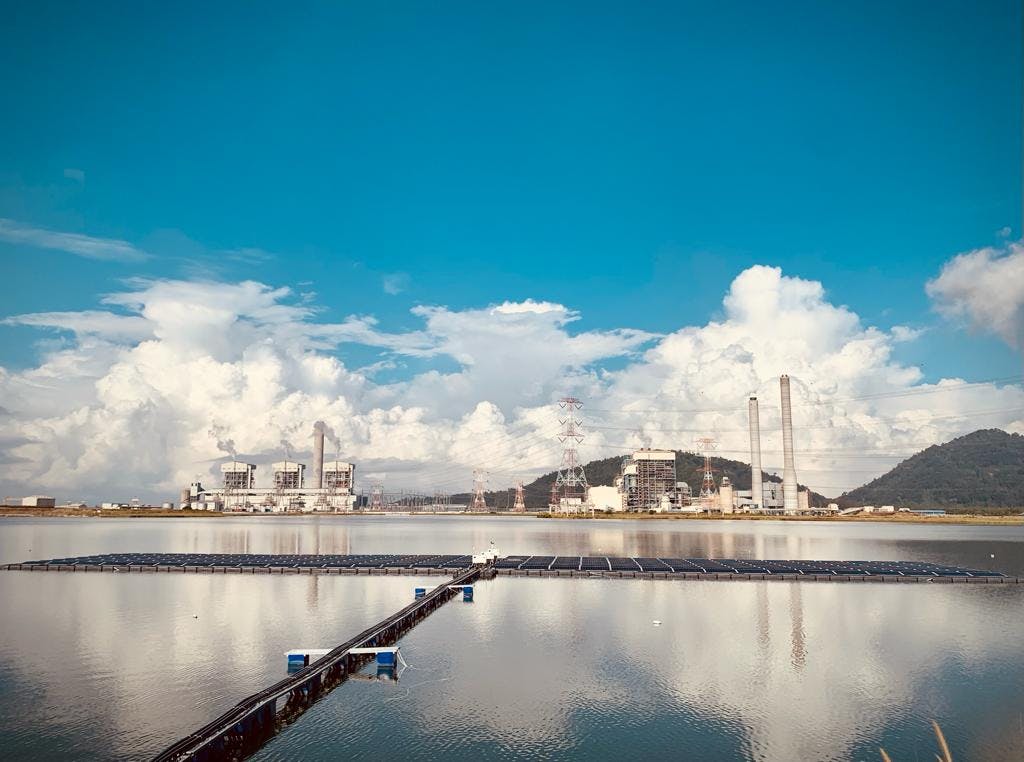There is currently nothing more damaging to our planet’s climate today than the consistent burning of coal, oil and gas worldwide. Fossil fuels are by far the largest contributor to global climate change, accounting for over 75 per cent of global greenhouse gas emissions and nearly 90 per cent of all carbon dioxide emissions, according to figures from the United Nations.
The key to addressing climate change is to reduce our reliance on energy from fossil fuels and embrace renewable energy sources.
The global consensus for the energy transition has grown – fueled by the increasingly devastating impact of climate change as seen in floods and extreme weather events worldwide, especially in Asia. The region is warming faster than the global average, with the mean temperature in 2022 being the second or third warmest on record – about 0.72°C degrees above the 1991–2020 average – according to statistics from The World Meteorological Organisation.
Malaysia – a country known for its year-round tropical climate, which brings high temperatures, heavy rainfall and high levels of humidity – is especially affected by climate change. Surface temperatures in Peninsular Malaysia have increased by 0.14 to 0.25°C degrees per decade since 1970, according to a 2021 study by the World Bank and Asian Development Bank. Such high temperatures have a bigger impact in urban cities like Kuala Lumpur, which are already 4 to 6°C degrees warmer than surrounding areas.
There are, however, developments in the works. In August 2023, the Malaysian government launched the National Energy Transition Roadmap (NETR), which outlines the pathway required to transform Malaysia’s energy system by accelerating its shift to renewable energy.
The NETR aims to increase the country’s installed renewable energy capacity to 40 per cent by 2035 and to 70 per cent by 2050, but progress must be made. According to the International Renewable Energy Agency (IRENA), Malaysia’s renewable energy stood at 23 per cent of the national installed capacity in 2022.
These plans are arguably significant when one considers Malaysia’s current reliance on fossil fuels – coal makes up 21 per cent of the country’s primary energy mix, with oil and natural gas accounting for just over 34 and 35 per cent, respectively. This amounts to a 91 per cent dependence on fossil fuels, according to figures from the Asia Natural Gas and Energy Association, an organisation that represents energy producers, buyers, suppliers, and companies in the Asia Pacific region.
The country needs to transition to cleaner forms of energy to meet its goal of achieving net zero greenhouse gas (GHG) emissions as early as 2050 and to reduce the intensity of greenhouse gas emissions as a result of economic growth by 45 per cent by 2030 relative to 2005 levels.
In addition to steering Malaysia towards its net zero target, the NETR could also bolster Malaysia’s economy by producing green services and products, creating new jobs, and facilitating the flow of investments.
“For the economy, we are expecting a 10 to 15 per cent uplift in GDP value from market-creating products that are high-growth and high-value,” said Malaysian minister of economy Rafizi Ramli, at the launch of the NETR at an inaugural Energy Transition Conference organised by TNB.
The NETR will also create 350,000 new jobs in the high-growth high-value sector, Rafizi added, and 70 per cent of income gains will flow to low- and medium-income households. This is vital in ensuring more Malaysians benefit from the economic gains of the energy transition.
The NETR also sets out six energy transition levers that will enable a just, inclusive and cost-effective energy transition: carbon capture, utilisation and storage; green mobility; bioenergy; hydrogen; energy efficiency; and renewable energy. Combined, they enable the country to wean itself off its dependence on fossil fuels for electricity generation and economic growth.
Spurring Malaysia’s energy transition
The NETR identified 10 flagship projects that aim to catalyse Malaysia’s energy transition and demonstrate the types of technology and solutions that are required to achieve it, with TNB to lead three flagship projects.
One, called “Hybrid Hydro-Floating Solar” will see TNB aim to generate up to 2.5 gigawatts (GW) of power from hybrid floating solar plants at hydro dam reservoirs. It will be developed in four phases from 2023 to 2040, with solar projects at TNB’s Temenggor and Chenderoh hydro plants expected to be completed by 2025.
Hybrid floating solar plants can be installed on the surface of water bodies such as reservoirs, lakes, and dams, and can act as energy storage systems by conserving water in the reservoirs during peak hours and discharging it during non-peak hours. The system aims to generate power from renewable energy around the clock, addressing the issue arising from the mismatch between electricity demand and the amount of available solar energy throughout the day.

A floating solar installation at TNB’s Manjung power plant in the Malaysian state of Perak. Hybrid floating solar plants have been identified as a flagship catalyst project under Malaysia’s NETR. Image: TNB
Modern technologies can help improve the efficiency of solar projects, noted the APAC managing director of Energy Institute, Peter Godfrey.
“There is high potential for hybrid floating solar plants in Malaysia,” said Godfrey, adding that besides reservoirs, large water bodies also exist in many parts of Malaysia, which could potentially house solar projects.
“Linking floating solar to power plants can create a 24-hour solution, for example through co-firing,” he said, referring to the process of combining solar energy with other energy sources to generate electricity.
Another flagship project led by TNB under the NETR will see it work with Petronas to apply hydrogen and ammonia at TNB’s coal power plants. When hydrogen and ammonia are applied at power plant facilities, they can help reduce greenhouse gas emissions and increase the share of renewable energy in the electricity mix, as both hydrogen and ammonia can be “co-fired” or used alongside other fuels to generate electricity.
“Integrating low-carbon hydrogen and ammonia into Malaysia’s energy landscape has the potential to significantly curtail the country’s reliance on coal,” said the president of The Electrical and Electronics Association of Malaysia (TEEAM), Ir Chang Yew Cheong.
The third TNB-led project will see the company work with cooperatives, small- and medium-sized enterprises (SMEs) and state economic development corporations to jointly develop large-scale solar (LSS) parks, each deploying 100 megawatts (MW) of renewable energy in five sites across several states.“The solar parks could create the beginning of a utility-sized project that can then be linked to the grid,” said Godfrey.
Long term impacts
The flagship projects led by TNB should ideally be scalable, cautions Godfrey, as this could add much needed impetus to drive Malaysia’s energy transition over the long term.
How these solutions could impact regulations and ensure that they go beyond being pilot projects should also be studied, he added.
“If we’re serious about moving forward with the energy transition, we need to create regulatory change and redesign how our energy systems work,” added Godfrey.
The NETR, coupled with TNB’s Energy Transition Plan to achieve net zero carbon emissions by 2050, may see the decarbonisation of power generation sources, the development of a flexible and cross-border grid, and the empowerment of cross-sector electrification and prosumers.
To meet its net zero goal, Malaysia must also repower coal plants with natural gas, leverage hydrogen co-firing when possible, and eventually retire its coal plants.
But how can Malaysia decarbonise its power generation while meeting the country’s current and future energy needs?
As a first step, subsidies for fossil fuels must be removed, and instead go towards a decarbonisation fund, suggested Godfrey. “You also need the goodwill of governments and policies that encourage investors from the private sector, and for investors to expect a reasonable return on investment for decarbonisation,” he said.
Chang of TEEAM added that investments should also be channelled towards battery storage systems. “To ensure a reliable power supply despite the intermittent nature of renewables, investments in advanced energy storage solutions and grid modernisation are imperative,” he said.
In his closing remarks, TNB president and chief executive officer Dato’ Seri Ir Baharin Din concluded that TNB will strive to continue playing a pivotal role in driving Malaysia’s energy transition.
“At TNB, what is important for us is balancing the energy trilemma, while enabling the nation’s economic growth,” he said. “There remain many challenges in figuring out the technology, policies and funding required to accelerate this transition. Therefore, it is very important to bring together [industry] players and policymakers to discuss how we can deliver an accelerated and responsible energy transition.”











